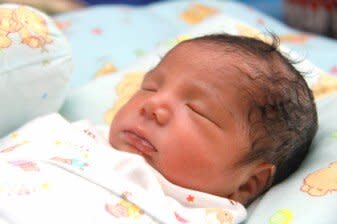Some Infant White Noise Machines Could Pose Hearing Risk

Infant sleep machines emit white noise or nature sounds to drown out everyday disturbances to a baby's sleep. The machines, sometimes embedded in cuddly stuffed animals, are popular gifts at baby showers and routinely recommended by parenting books and websites.
Some sleep experts advise parents to use these noisemakers all night, every night, to ensure the best rest for a newborn. Many parents say their babies become so used to the sounds of rainfall or birds that they will not nap without them.
Researchers at the University of Toronto evaluated 14 popular sleep machines at maximum volume and found they produced between 68.8 to 92.9 decibels at 30 centimeters, about the distance one might be placed from an infant's head. Three exceeded 85 decibels, the workplace safety limit for adults on an eight-hour shift for accumulated exposure as determined by National Institute for Occupational Safety and Health. One machine was so loud that two hours of use would exceed workplace noise limits.
At 100 centimeters, all the machines tested were louder than the 50-decibel limit averaged over an hour set for hospital nurseries in 1999 by an expert panel concerned with improving newborn sleep and their speech intelligibility.
"These machines are capable of delivering noise that we think is unsafe for full-grown adults in mines," said Dr. Blake Papsin, the senior author of the paper and the chief otolaryngologist at the Hospital for Sick Children in Toronto. The study was published in the journal Pediatrics. Dr. Papsin got the idea for this study after a parent brought a portable white noise machine to the hospital that sounded as roaring as a carwash.
"Unless parents are adequately warned of the danger, or the design of the machines by manufacturers is changed to be safer, then the potential for harm exists, and parents need to know about it," said Dr. Gordon B. Hughes, the program director of clinical trials for the National Institute on Deafness and Other Communication Disorders, who was not involved in the study.
Safe use is possible, the study's authors suggest. "Farther away is less dangerous, a lower volume is better and shorter durations of time, all things that deliver less sound pressure to the baby," Dr. Papsin said.
Image: Sleeping newborn, via Shutterstock
Find out when your child will hit all her major milestones with our Baby Milestone Tracker.
